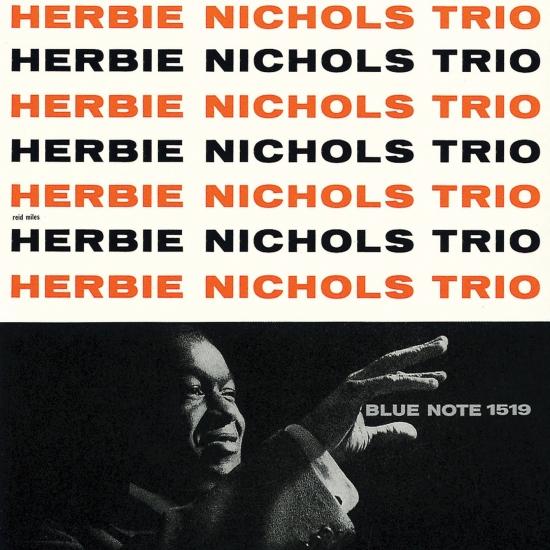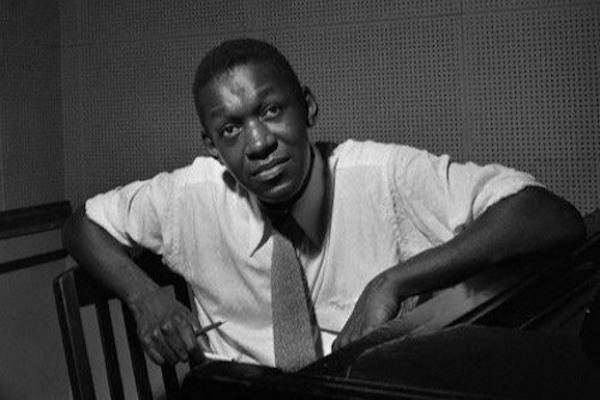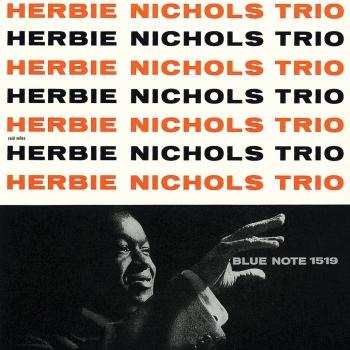
Herbie Nichols Trio (Remastered) Herbie Nichols Trio
Album Info
Album Veröffentlichung:
1956
HRA-Veröffentlichung:
19.07.2019
Das Album enthält Albumcover
Entschuldigen Sie bitte!
Sehr geehrter HIGHRESAUDIO Besucher,
leider kann das Album zurzeit aufgrund von Länder- und Lizenzbeschränkungen nicht gekauft werden oder uns liegt der offizielle Veröffentlichungstermin für Ihr Land noch nicht vor. Wir aktualisieren unsere Veröffentlichungstermine ein- bis zweimal die Woche. Bitte schauen Sie ab und zu mal wieder rein.
Wir empfehlen Ihnen das Album auf Ihre Merkliste zu setzen.
Wir bedanken uns für Ihr Verständnis und Ihre Geduld.
Ihr, HIGHRESAUDIO
- 1The Gig04:22
- 2House Party Starting05:35
- 3Chit Chattin'04:00
- 4The Lady Sings The Blues04:20
- 5Terpischore03:56
- 6The Spinning Song04:49
- 7Query03:23
- 8Wildflower04:01
- 9Hangover Triangle03:58
- 10Mine04:00
Info zu Herbie Nichols Trio (Remastered)
Herbie Nichols Trio is an album by American jazz pianist Herbie Nichols, featuring performances recorded and released on the Blue Note label in 1956.
Although originally unheralded at the time of release Nichol's Blue Note recordings have gained recognition as highly original and ground-breaking compositions and performances. The Allmusic review by Scott Yanow awarded Nichols' The Complete Blue Note Recordings, released in 1997, a five-star rating and stated: "The music is virtually unclassifiable, and although largely straight-ahead, sounds unlike anything produced by Herbie Nichols' contemporaries. Essential music".
Herbie Nichols, piano
Teddy Kotick, bass (tracks 6-8 & 10)
Al McKibbon, bass (tracks 1-4 & 9)
Max Roach, drums
Recorded August 1 & 7, 1955 and April 19, 1956
Produced by Alfred Lion
Digitally remastered
 Herbie Nichols
Herbie Nichols
One of jazz’s most tragically overlooked geniuses, Herbie Nichols was a highly original piano stylist and a composer of tremendous imagination and eclecticism. He wasn’t known widely enough to exert much influence in either department, but his music eventually attracted a rabid cult following, though not quite the wide exposure it deserved.
Nichols was born January 3, 1919, in New York and began playing piano at age nine, later studying at C.C.N.Y. After serving in World War II, Nichols played with a number of different groups and was in on the ground floor of the bebop scene. However, to pay the bills he later focused on Dixieland ensembles; his own music — a blend of Dixieland, swing, West Indian folk, Monk-like angularity, European classical harmonies via Satie and Bartók, and unorthodox structures — was simply too unclassifiable and complex to make much sense to jazz audiences of the time. Mary Lou Williams was the first to record a Nichols composition — “Stennell,” retitled “Opus Z,” in 1951; yet aside from the song he wrote for Billie Holiday, “Lady Sings the Blues,” none of Nichols’ work got enough attention to really catch on.
He signed with Blue Note and recorded three brilliant piano trio albums from 1955-1956, adding another one for Bethlehem in late 1957. Nichols languished in obscurity after those sessions, though; sadly, just when he was beginning to find a following among several of the new thing’s adventurous, up-and-coming stars, he was stricken with leukemia and died on April 12, 1963. In the years that followed, Nichols became a favorite composer in avant-garde circles, with tributes to his sorely neglected legacy coming from artists like Misha Mengelberg and Roswell Rudd. He also inspired a repertory group, called the Herbie Nichols Project, and most of his recordings were reissued on CD. (Steve Huey, AMG)
Dieses Album enthält kein Booklet











